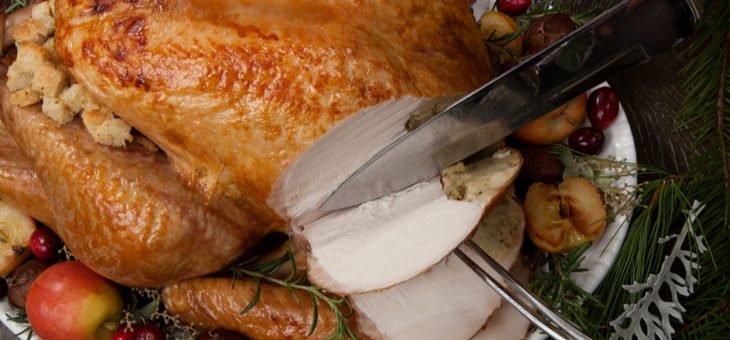We may not love the company of every Christmas guest, but we don’t want to give them food poisoning. Poor food handling and inadequate cooking are the leading causes of poultry-related food poisoning. Spending the day with fever, cramps and diarrhoea is no-one’s idea of festive spirit, so it’s important to cook the chicken or turkey the right way.
Wash your hands
For the sake of public health, it’s best to assume than anything the raw bird touches could either be contaminated or a contaminant. Wash your hands and lower arms with warm water and soap before approaching the bird. Ensure that any containers, boards, trays or surfaces it will touch are clean and cleanable.
Thaw it right
If you thaw a frozen bird by simply leaving it out on the counter, the temperature will become unsafe after just two hours and encourage the growth of bacteria. Instead, defrost your chicken or turkey in a leak-proof container in the fridge. This will ensure that the temperature never enters the ‘danger zone’ and that none of the juices contaminate other foods. If there is no space in your fridge, tie the bird in a leak-proof bag and leave it to sit in a sink of cold water. Change the water every half hour to ensure a stable temperature. If you use a microwave to thaw your turkey or chicken, follow the instructions on the machine or packaging.
Stuff safely
If you are putting stuffing inside the bird, try to put it in as close to the time of cooking as you can. Ensure that the temperature of the stuffing as well as the interior of the bird itself heats up to at least 75°C to ensure all bacteria has been killed.
Cook correctly
Unlike steak, serving rare poultry won’t impress the Christmas guests. Cook your turkey or chicken at no lower than 165°C, though usually hotter. Make sure the inside of the thick breast, back and legs have reached at least 75°C. If any of the meat appears pink, it’s best to keep cooking your bird.
Leftovers
The second-most common cause of food poisoning it clostridium perfringens, a bacteria that grows on cooked foods left at room temperature. Leftovers should be placed in secure containers and refrigerated within two hours of preparation.
If you enjoy our content, don’t keep it to yourself. Share our free eNews with your friends and encourage them to sign up.
Related articles:
Christmas with the catering show
Christmas Panettone Trifle
DIY Christmas decorations
Health disclaimer: This article contains general information about health issues and is not advice. For health advice, consult your medical practitioner.

